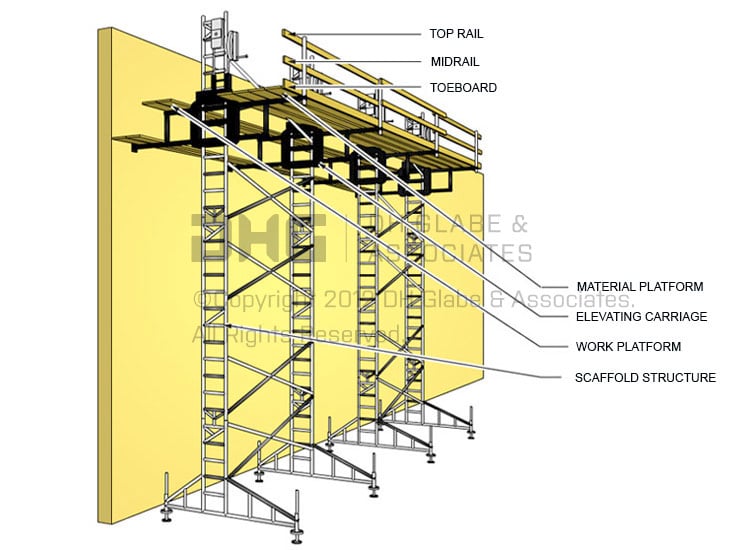Exciting times these are for the scaffold industry. Years of meetings are producing results. People are communicating, discussing, listening, and working on making scaffold products safer and safer. And yet, workers are still getting injured and killed while using and working with scaffolds.
What are the exciting times? The Federal Occupational Safety & Health Administration, OSHA, has appointed a new contact person for scaffold matters. The National Institute for Occupational Safety & Health, NIOSH, is investigating practical research design concepts for evaluating scaffolds. The American National Standards Institute, ANSI, is progressing with an update of the scaffold standards. The Advisory Committee on Construction Safety & Health, ACCSH, has forwarded their recommendations for scaffold erector guidelines to OSHA for possible inclusion in Appendix B of the Construction Industry Standards. Recognition is being made to the complexities of fall protection for erectors!
What’s the frustration? Workers are still getting hurt and killed. And it’s both the user and the erector, professional and non-professional. We establish rules and guidelines, codes and standards. We hire safety professionals to monitor and enforce all those rules and standards and codes and guidelines. And people still get injured and killed, maimed, disfigured, immobilized, and crippled. Having been involved in various capacities with the development of standards and guidelines, I would like to think that the work that many people have contributed to these efforts produce results. Unfortunately, the sight of one former scaffold erector, so injured that he cannot remember simple tasks, seems to negate these efforts.
Elsewhere in this newsletter is an article that addresses legal issues that pertain to scaffold suppliers. Understanding the potential for liability is important to the profitability of any business and consequently should be addressed. But buried deep in the paper trail and unfortunately forgotten by too many people, is the fact that a worker was probably injured or killed. In my experience as an expert witness it is never a pretty sight to see an individual lying prone in a wheel chair in a courtroom while the grieving family looks on.
Lawsuits and regulations will not minimize or eliminate the hazard. OSHA’s Appendix B of the scaffold standards, titled “Criteria for Determining the Feasibility of Providing Safe Access and Fall Protection for Scaffold Erectors and Dismantlers,” will not eliminate injuries and deaths. Two additional elements are required to provide a safe workplace for scaffold users and erectors. The first is training. The OSHA scaffold standards specifically address this issue by requiring that ALL users and erectors be trained. My experience providing training suggests that workers and their employers are not complying with the standards and not taking advantage of the SIA and other training programs. Worst yet, the training may have been provided but the workers either forget what they have learned, or they choose not to utilize that knowledge.
The second element lacking from the workplace is concern for fellow workers. My experience as a scaffold designer, and exposure to a vast variety of workplaces and working environments, consistently has illustrated that workers, and many times their employers, do not accept their social obligation to watch out for other human beings. How many times have you been on a jobsite and observed many poorly constructed scaffolds? How many pictures have been shown in this newsletter illustrating poor scaffold construction? Did anyone talk to the exposed worker about the hazards? How many times have you told a worker that he/she should stop their work to correct a hazard?
Progress and frustration. As stated in another article in this newsletter, OSHA has revised their definition for competent person by requiring that the competent person, among other requirements, have “specific training and/or experience.” This is good. This is progress. The frustration is that we haven’t complied with the standard. Are the scaffold erectors on your projects trained and experienced? Is the supervisor competent? The standards and guidelines and codes are ineffective if we don’t use them. Injuries and death will continue if we don’t care for others and likewise, others care about us. This isn’t difficult. Standards and Codes of Safe Practice address hazards. If you know the hazard, you can minimize and/or eliminate it. Do that and you are in compliance. If you’re in compliance, you’re watching out for your fellow worker. Life is good!










